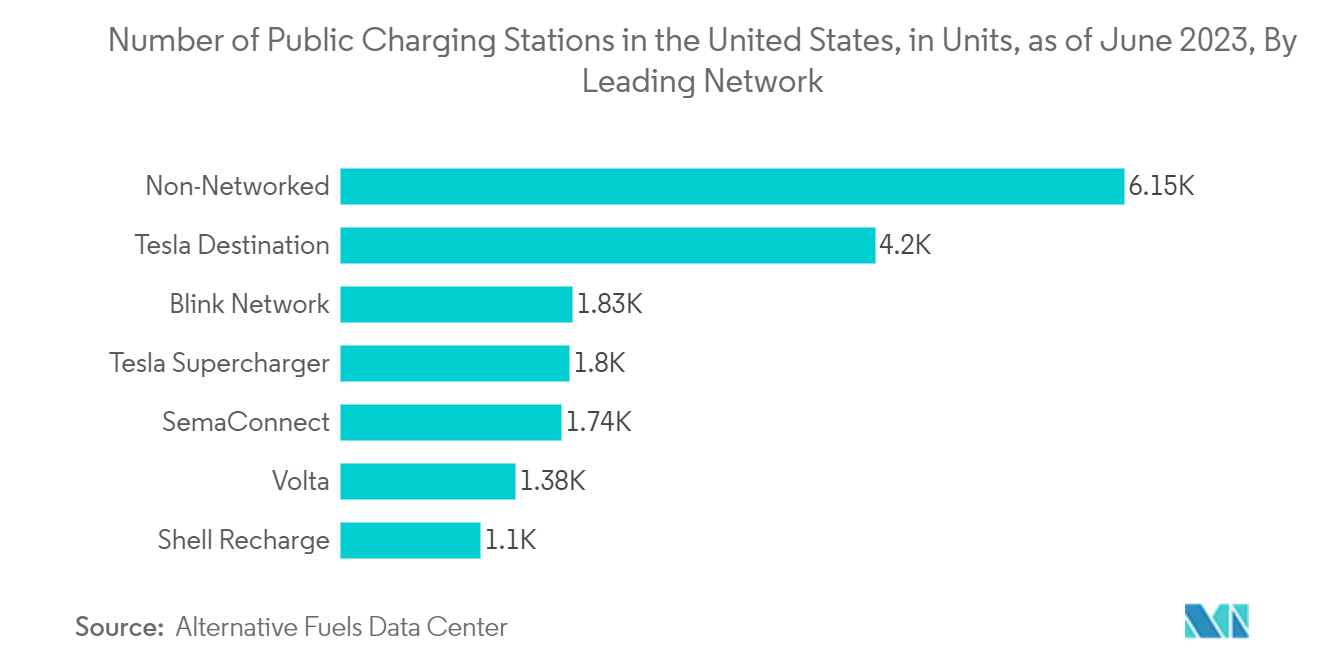Market Trends of United States Electric Vehicle Charging Systems And Equipment Industry
Passengers Cars Segment to Gain Traction during the Forecast Period
Consumers' shifting preference toward availing of new-energy vehicles, owing to the government's aggressive focus on promoting the reduction of carbon emissions, and the rapid urbanization rate across the United States is contributing to the rising demand for electric cars, thereby positively impacting the growth of the electric vehicle charging system and equipment market.
• According to the Bureau of Economic Analysis (BEA), the District of Columbia, Massachusetts, and Connecticut were the leading states in the United States with the highest per capita disposable income as of 2022. In the District of Columbia, the per capita disposable income stood at USD 77,937 in 2022, followed by Massachusetts, which recorded a per capita disposable income of USD 69,316 during the same period.
Although the United States government had committed to boosting the investment in developing electric vehicle charging infrastructure nationwide, installing these systems has witnessed a lower penetration rate in recent years. This leads to consumers shifting the tendency to opt for alternative fuel vehicles rather than EVs since operational challenges exist without optimal EV charging station installation. However, in the coming years, it is aggressively focusing on ramping up its investments to build 500,000 charging stations by 2030, enhancing the adoption of passenger electric cars.
• The battery electric vehicle sales in the United States touched 258.8 thousand units in Q1 2023 compared to 226.7 thousand units in Q4 2022, recording a Q-o-Q growth of 14.1% between Q4 2022 and Q1 2023.
Besides constantly innovating its electric passenger car offerings, various auto manufacturers, such as Tesla, are also heavily focused on building an efficient EV infrastructure across the country, including its plan to install superchargers, which is expected to positively impact the demand for this market segment in the coming years. Further, with rapid enhancement in battery technology and the subsequent improvements in charging system architecture, the passenger car segment is expected to contribute a major share to the overall market during the forecast period.

Charger Segment to Contribute to the Largest Share during the Forecast Period
Chargers play a crucial role in the entire electric vehicle charging system network since they help power the battery used for the transportation of vehicles. The growing electric vehicle parc in the United States is increasing the demand for advanced chargers. Various charging system manufacturers invest hefty sums to deploy advanced chargers across the United States, contributing to this market segment's growth.
• According to the Alternative Fuels Data Center, Chargepoint, Non-Networked, and Tesla Destination are the leading brands in the United States with the highest number of installed public electric charging stations. The number of public electric charging stations deployed by ChargePoint reached 30,406 units as of June 2023, followed by non-networked charging stations, with 6,147 charging stations operational, and Tesla Destination, with 4,197 charging stations operational as of June 2023.
In recent years, there has been an increasing preference for adopting an AC charging system compared to its counterpart, owing to its affordability and familiarity. Further, with rapid enhancement in AC charging technology, manufacturers will increasingly prefer to deploy this technology in the EV charging system, which is expected to contribute to the growth of this segment.
Moreover, various fleet operators, logistics companies, and last-mile delivery service companies prefer to install EV charging stations at their parking sites, further fostering the demand for chargers in the market. Companies such as ChargePoint, ABB, and Tesla, among others, are strategizing to expand their fast-charging networks across the United States to assist the rapid penetration of EVs in the market. With the growing investment by public and private players in the United States to improve the EV charging infrastructure and simultaneously assist in installing more advanced charging systems, the demand for charges is expected to showcase surging demand during the forecast period.


